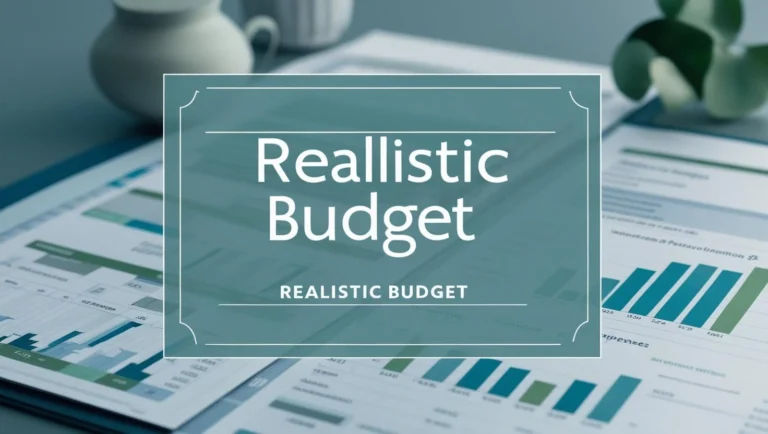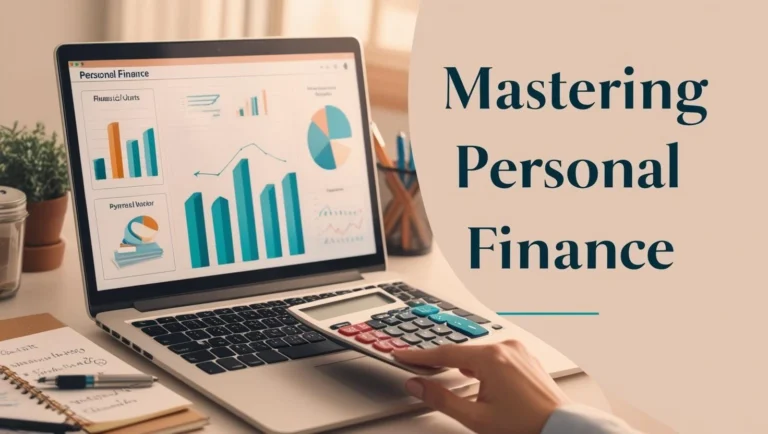In today’s fast-paced world, achieving financial freedom at a young age has become an increasingly important goal for many. Financial freedom means different things to different people, but at its core, it’s about having enough savings, investments, and cash on hand to afford the lifestyle you want while also having a cushion for unexpected expenses and emergencies.
Understanding Financial Freedom: Warning Signs Similar to Diabetes Symptoms
Just as diabetes symptoms can be early warning signs for a serious health condition, there are financial warning signs that you might be heading in the wrong direction. Recognizing these early indicators is crucial for your financial health.
Common financial warning signs include:
- Living paycheck to paycheck
- Accumulating credit card debt
- Having no emergency fund
- Making minimum payments on loans
- Ignoring retirement planning
Like monitoring blood sugar levels, keeping an eye on these financial indicators can help you adjust your course before serious problems develop.
You would love to read our latest article on “Financial Advisor“
Setting Clear Financial Freedom Goals: The First Step to Prevention
Setting clear, achievable financial goals is like creating a diabetes prevention plan—it requires foresight, discipline, and consistent monitoring. Before turning 30, your financial goals should include:
- Eliminating high-interest debt: Focus on paying off credit cards and personal loans first.
- Building an emergency fund: Aim for 3-6 months of living expenses.
- Maximizing retirement contributions: Take advantage of compound interest by starting early.
- Developing multiple income streams: Create passive income through investments or side hustles.
- Planning for major life expenses: Consider housing, education, or family planning costs.
Each goal should be SMART: Specific, Measurable, Achievable, Relevant, and Time-bound. This structured approach increases your chances of success significantly.
Mastering Budgeting: Managing Your Financial Freedom Diet
Budgeting is to financial health what diet management is to preventing diabetes symptoms. Both require conscious choices, moderation, and occasional sacrifice for long-term wellness.
Start with the 50/30/20 rule:
- 50% for needs (housing, food, utilities)
- 30% for wants (entertainment, dining out, hobbies)
- 20% for savings and debt repayment
Modern budgeting tools like Mint, YNAB (You Need A Budget), or Personal Capital can help track your spending automatically. These apps function like glucose monitors, providing real-time feedback on your financial health.
For those under 30, focus on minimizing fixed expenses, particularly housing. Keeping your rent or mortgage below 25% of your take-home pay gives you flexibility to increase savings and investments.
Investing Early: The Key to Financial Freedom Health Similar to Managing Diabetes Symptoms
Just as early intervention is crucial in managing diabetes symptoms, early investing is vital for financial freedom. The power of compound interest cannot be overstated. Consider this: investing $500 monthly from age 22 to 30 (just 8 years) and then stopping completely can yield more at retirement than starting at age 30 and investing $500 monthly for 35 years.
For young investors, focus on:
- Employer-sponsored retirement plans: Always contribute enough to get the full employer match—it’s free money.
- Roth IRAs: These tax-advantaged accounts are ideal for young earners in lower tax brackets.
- Low-cost index funds: These provide diversification without high fees, perfect for long-term growth.
- Growth stocks: While more volatile, these offer higher potential returns over long time horizons.
Remember that consistent investing, even in small amounts, is more important than timing the market or making perfect investment choices.
You may find our article on Emergency Funds worth reading.
Developing High-Income Skills: Treating the Root Cause of Financial Limitations
While budgeting and investing are essential, increasing your income is often the fastest path to financial freedom. Like addressing the root causes of diabetes symptoms rather than just the symptoms themselves, developing valuable skills addresses the root of financial limitations.
High-income skills to develop before 30 include:
- Coding and software development
- Digital marketing
- Sales and negotiation
- Financial analysis
- Project management
- Data science and analytics
- UX/UI design
Many of these skills can be learned through online courses, bootcamps, or certification programs that cost far less than traditional degrees while potentially yielding similar or better income results.
Creating Multiple Income Streams: A Preventative Approach to Financial Vulnerability
Relying solely on a 9-to-5 job is like depending on a single medication to manage all diabetes symptoms—it’s not the most comprehensive approach. Before 30, aim to establish multiple income streams:
- Active income: Your primary job or profession
- Passive income: Investments, dividends, interest
- Semi-passive income: Rental properties, content creation, online courses
- Side hustle income: Freelancing, consulting, part-time work
Each additional income stream reduces your financial vulnerability and accelerates your journey to financial freedom. Start small—perhaps with a weekend side gig or small investments in dividend-paying stocks—and gradually expand.
Minimizing Lifestyle Inflation: Recognizing Hidden Financial Diabetes Symptoms
Lifestyle inflation—increasing your spending as your income rises—is a silent wealth killer, much like how undiagnosed diabetes symptoms can silently damage health. Young professionals are particularly susceptible as they experience salary increases.
To combat lifestyle inflation:
- Maintain the same standard of living for 6-12 months after each raise or promotion
- Automatically direct raise percentages to investments
- Focus on experiences rather than material possessions
- Practice gratitude for what you already have
- Surround yourself with like-minded peers who value financial responsibility
The goal isn’t deprivation but intentionality—making conscious choices about where your money goes rather than defaulting to higher spending with higher income.
Building a Robust Emergency Fund: Your Financial Insulin
An emergency fund serves as your financial insurance policy—much like insulin is essential for managing diabetes symptoms. Before 30, aim to build an emergency fund covering 3-6 months of essential expenses.
This fund should be:
- Easily accessible in high-yield savings accounts or money market funds
- Separate from your regular checking account to reduce temptation
- Used only for genuine emergencies, not planned expenses
- Replenished immediately after use
Many financial experts recommend building this fund before aggressively paying down lower-interest debt or making significant investments. The peace of mind and financial stability it provides are invaluable.
Real Estate Strategies: Long-Term Financial Treatment Plan
Real estate can be a powerful wealth-building tool, similar to how a comprehensive treatment plan manages diabetes symptoms over the long term. Before 30, consider these approaches:
- House hacking: Purchase a multi-unit property, live in one unit, and rent out the others to cover your mortgage
- Real estate investment trusts (REITs): Invest in real estate without directly owning properties
- Rent optimization: Choose housing significantly below your means to maximize savings
- First-time homebuyer programs: Take advantage of lower down payment requirements and favorable interest rates
Real estate typically appreciates over time while also potentially generating rental income—a powerful combination for wealth building.
Tax Optimization: Preventing Unnecessary Financial Drainage
Understanding and optimizing taxes is like preventing complications from diabetes symptoms—it requires knowledge, planning, and professional guidance when needed. Before 30, familiarize yourself with:
- Tax-advantaged accounts: Maximize contributions to 401(k)s, IRAs, and HSAs
- Tax-loss harvesting: Offset capital gains with capital losses
- Deduction opportunities: Track business expenses, educational costs, and charitable giving
- State tax considerations: Consider the tax implications of where you live and work
Many young professionals overpay taxes simply through lack of knowledge. Consider consulting with a tax professional to ensure you’re not leaving money on the table.
Debt Management: Controlling Financial Diabetes Symptoms Through Strategic Planning
Not all debt is created equal. Like managing different types of diabetes symptoms requires different approaches, various debts require different strategies:
- High-interest debt (credit cards, personal loans): Eliminate these aggressively, possibly using the debt avalanche method (highest interest first) or debt snowball method (smallest balance first)
- Student loans: Consider refinancing for lower rates, and explore forgiveness programs if you work in public service
- Mortgage: This can be “good debt” if the interest rate is low and the property appreciates
- Business loans: These can be acceptable if they fund income-producing activities with returns exceeding the interest rate
Before 30, aim to eliminate all high-interest debt while strategically managing lower-interest debt that finances appreciating assets.
Continuous Financial Education: The Ongoing Treatment for Financial Health
Just as diabetes management requires continuous learning about new treatments and management techniques, financial freedom demands ongoing education. Before 30, develop habits of financial learning:
- Read one personal finance or investing book monthly
- Follow reputable financial blogs and podcasts
- Join investment or financial independence communities
- Consider working with a fee-only financial advisor for personalized guidance
- Take courses on specific wealth-building strategies that interest you
The financial landscape constantly evolves with new investment vehicles, tax laws, and economic conditions. Staying informed helps you adapt your strategy accordingly.
Leveraging Technology: Modern Tools for Managing Financial Diabetes Symptoms
Technology has revolutionized both diabetes management and personal finance. Before 30, incorporate these tech tools:
- Robo-advisors: Platforms like Betterment or Wealthfront offer low-cost automated investing
- Micro-investing apps: Services like Acorns or Stash make investing accessible with small amounts
- Financial tracking tools: Apps like Personal Capital provide comprehensive views of your entire financial picture
- Banking automation: Automatic transfers to savings and investments ensure consistent progress
- Cashback and rewards optimizers: Tools like Rakuten or credit card rewards trackers maximize returns on necessary spending
These technologies remove friction from good financial habits, making it easier to stay on track.
Conclusion: Your Personalized Path to Financial Freedom
Achieving financial freedom before 30 requires commitment, strategy, and action—much like managing diabetes symptoms requires a personalized treatment plan. There is no one-size-fits-all approach, but the principles outlined above provide a framework for success.
Remember that financial freedom isn’t just about reaching a specific net worth—it’s about creating options and reducing financial stress. By implementing these strategies consistently, you can build a foundation for lifelong financial wellness that pays dividends well beyond your 30th birthday.
Start where you are, use what you have, and do what you can. The journey of a thousand miles begins with a single step—take that step today.







